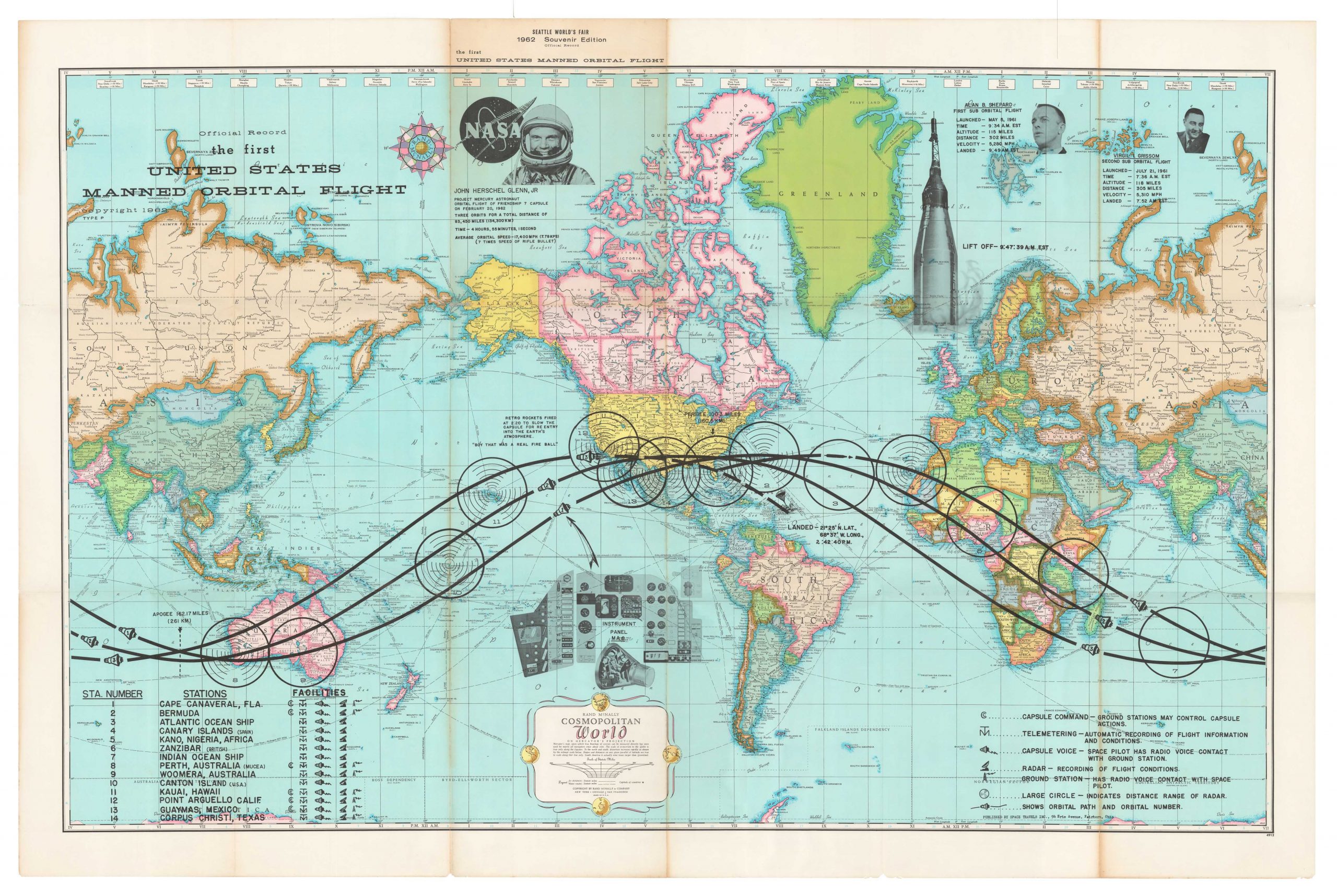Buckminster Fuller’s prophetic view of a world defined by its unbalanced energy consumption.
World Energy.
Out of stock
Description
This highly unusual thematic world map depicting the uneven consumption of energy on a global scale was compiled by R. Buckminster Fuller and published in 1939. Fuller was an American inventor whose innovative perspectives contributed to rethinking everything from architecture to mapping. He is perhaps most famous for inventing the geodesic dome.
In many ways, this map was like its maker: ahead of its time. In the 1930s, it was extremely avant-garde to be thinking about differences in energy consumption. Fuller makes his fundamental premise for the map explicit by highlighting the geographical distinction between just over 21 million “human beings” and almost 400 million “inanimate energy slaves.” In a small text box in the lower left corner, he explains the rationale. The division is essentially mathematical in that the quantification of these energy slaves is determined by dividing the total energy consumed by “industrialized man” (as derived from mineral sources and water power) by the annual energy output of an individual.
Each white dot on the map represents 1% of the total population, whereas each red dot represents 1% of the “inanimate slaves,” or the world’s focal centers of energy consumption. By this calculation, 54% of energy slaves in the 1930s reside in the United States. Since then, this number has, of course, only grown.
The map is, in many ways, prophetic. Not just in its overall assumption that uneven and imbalanced energy consumption is a global threat in the long run but also in the specific details on how that future will unfold in the short term. One observable indication of a post-WW2 scenario is seen in the emergence of consumption centers (in the form of red dots) in places like Southeast Asia and South America.
Cartographer(s):
R. Buckminster Fuller (1895-1983) was an American scientist, inventor, and polymath. Born in Massachusetts, he went to Harvard in 1913 but soon fell behind and dropped out. During the First World War, Fuller served in the U.S. Navy, where he developed a new winch for lifeboats.
After the war, Fuller started a construction company, which eventually failed and left him deeply depressed and suicidal. For two years, he lived as a recluse, contemplating his life’s purpose and how he could harness his skills and experience to help the human race. Fuller began inventing incredible things based on perceived need. His first great success was the Dymaxion House, a lightweight domicile that could be airlifted to any destination and then be inhabited.
In 1947, Fuller invented his perhaps most important engineering contribution: the geodesic dome. Based on his “synergetic geometry,” the geodesic dome was lightweight and easy to assemble. It enclosed more space than any other structure of similar dimensions and did so without interior support columns. To this day, geodesic domes are used to develop habitats in the harshest conditions, including on the polar caps, the moon, and potentially even for Mars expeditions.
Fuller was renowned for his comprehensive perspective on global issues. Even during his life, he was hailed as one of the greatest minds of our time. Fuller spent more than fifty years developing pioneering solutions to some of the world’s biggest problems, approaching them primarily through design innovation and always aiming to improve the human condition.
Condition Description
Wear along left edge. Very good.
References





![[World] Continentem Dudum Notam Componebat & Continentem Noviter Detectam Componebat.](https://neatlinemaps.com/wp-content/uploads/2024/04/NL-01969-composite_thumbnail-300x300.jpg)